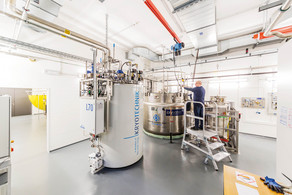Thesis defense of Ajvar Kern
- Defense
The basis for the application of proton therapy is the physical knowledge and thus the characterization of the proton beam with its depth dose distributions and the spot sizes for various energies. Together with a dose calibration, they form the basis of a beam model for the treatment planning system. The problem is, that the treatment planning system generally does not accurately calculate the first micro- and millimeters of the proton depth dose curve. Additionally, there is limited experimental data available for the superficial proton depth dose curve. The skin is the largest human organ and is involved in every irradiation, which means, it is exposed to the risk of side effects and long-term damage. The aim is to determine the dose delivered to the depth of the skin in proton therapy. In the first step of this thesis, the surface and skin dose of the depth dose curves is measured at various energies. In order to determine the dose in the skin depth in proton therapy, various detectors are used which are particularly suitable for shallow depth measurements. These include ionization chambers, thermoluminescence detectors and radiochromic films. In addition, the surface and skin doses are compared with a Monte Carlo simulation. The second section of this thesis examines the skin dose from various clinical perspectives. There, the impact of different proton beam techniques, the energy-reducing block (range shifter) or the air gap between the proton beam exit (the nozzle) to the detector on the skin dose are discussed.









